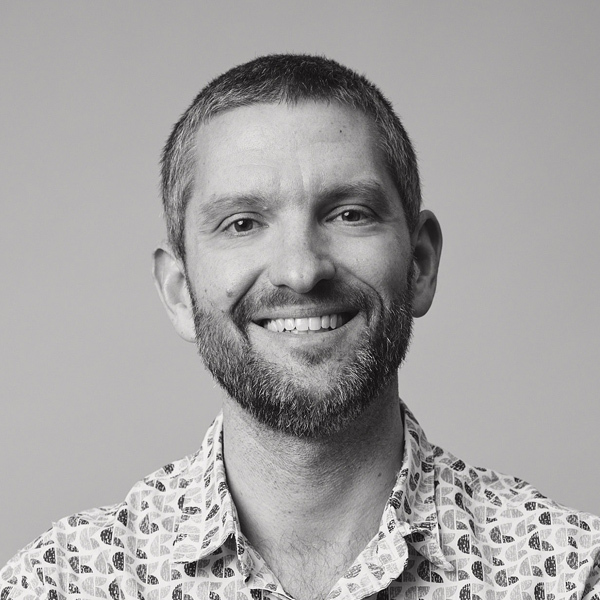To become better designers, we need more time for play
Does the monotony of constant client work hold us back from design innovation?

I’m a busy designer. I’m fortunate to be booked out months in advance. My freelance career has proven more stable than other’s “jobs”. I don’t wear busy as a badge of honour. I don’t condone hustle culture or compare how hard or long I work to others. But I know that a constant pipeline of new clients and a packed schedule of design projects is the oil that keeps the business ticking and the paychecks flowing. I keep my schedule tight, I stay laser-focused, and I deliver a shit-ton of great client work week-after-week-after-week. The business of design is good for me, except for one thing I lament.
I wish I had more time to explore and play
I crave the freedom and safety to try new things and fail, but sometimes learn a lot and add new tricks to my design toolbox along the way. I want more opportunities to experiment.
In a recent episode of Abstract: The Art of Design, toy designer Cas Holman explains how the best education comes from open-ended play — times to explore when there’s no right or wrong. No instructions that lead to a pre-determined outcome or goal. Instead of trying to learn a specific skill in a standardised way, we should follow what makes us curious. In this way, children grow agency and confidence. Creative adults need a dose of this same growth through play.
The best education comes from open-ended play — times to explore when there’s no right or wrong.
But the busyness of success gets in the way. Budgets, deadlines, and agile sprints rarely allow the opportunity for extraneous design exercises that help us stumble upon unexpectedly better solutions. It’s all too easy to get lazy and reuse proven design patterns or fallback to your comfort zone when deadlines are looming; to follow the data and shut out the chance for risk-free play and unique expression. You have to pick and choose your battles for when to push for innovation or stretch your boundaries of style, because rarely does a perfect project come along that has the time and budget to afford the luxury of open-ended experimentation. The rigour of the modern product design landscape is extinguishing chances for play.
This is a paradox
The greatest among us get there because they’re not afraid to innovate. They’re the avant-garde. They’re seen as industry leaders because they drag all the rest of us through their wake of new ideas, trendsetting styles, better functionality, or more efficient processes. It takes fearless, free experimentation to be that cutting edge.
But the best of us are also busy. Success leads to high-demand. And the resulting full schedule eats into our opportunity for play. The busyness of good business could end up killing what makes us special in the first place.
Time taken away from “real” design work for more playful pursuits is met with guilt, and continuously put off until some mystical time when things aren’t quite so busy.
So how do we balance freedom for play and time for experimentation with the desire to stay busy with client work and maximise profits?
It’s a dilemma I admit I haven’t solved. It’s hard to justify uncompensated experimentation when there’s client work to be done. Time taken away from that “real” design work for more playful pursuits is met with guilt, and continuously put off until some mystical time when things aren’t quite so busy. That future never comes, so play never happens when curiosity strikes, and the “ah-ha” moment of growth is lost.
Side projects or in-house products can be an outlet for playful design experimentation. If there’s no client to answer to, it’s easier to accommodate risk-free exploration. But those projects still need time and attention, and if you’re not pulling that time from your clients you’re taking it from your family instead, which is something I refuse to sacrifice.
The ideal scenario for any designer would be working with employers or clients who understand the value of experimentation and have the budget to appease that need for open-ended exploration. Who wouldn’t want to get paid to play? Those clients do exist. As we grow our skills and reputation we reach for them and snag one every so often. But they’ll never all be that way, no matter how brilliant we get.
We need to consciously create chances for playful experimentation to enter our schedules. If we don’t, we die.
Designers are futurists
We look ahead at what can be improved and then try to build that better future now. Designing the future requires constant learning, flexing to new skills and technologies, and finding new solutions for evolving problems. We can’t get there without growth, and we can’t grow without play.
I’d like to hear how you’ve made time for experimentation in your organization and design routine. How do you put a value on play so you can justify attention spent on it? Or do you value it at all?
Want to comment?
See this story on Medium
Hi, I'm Benek Lisefski. Since 2001 I've run my own independent design business. Join me as I unfold 20 years of freelance business knowledge: honest advice and practical tips to help you take your indie career from good to great.
MediumTop writer in Design, Business, Creativity, and Entrepreneurship.
 Menu
About
Menu
About


